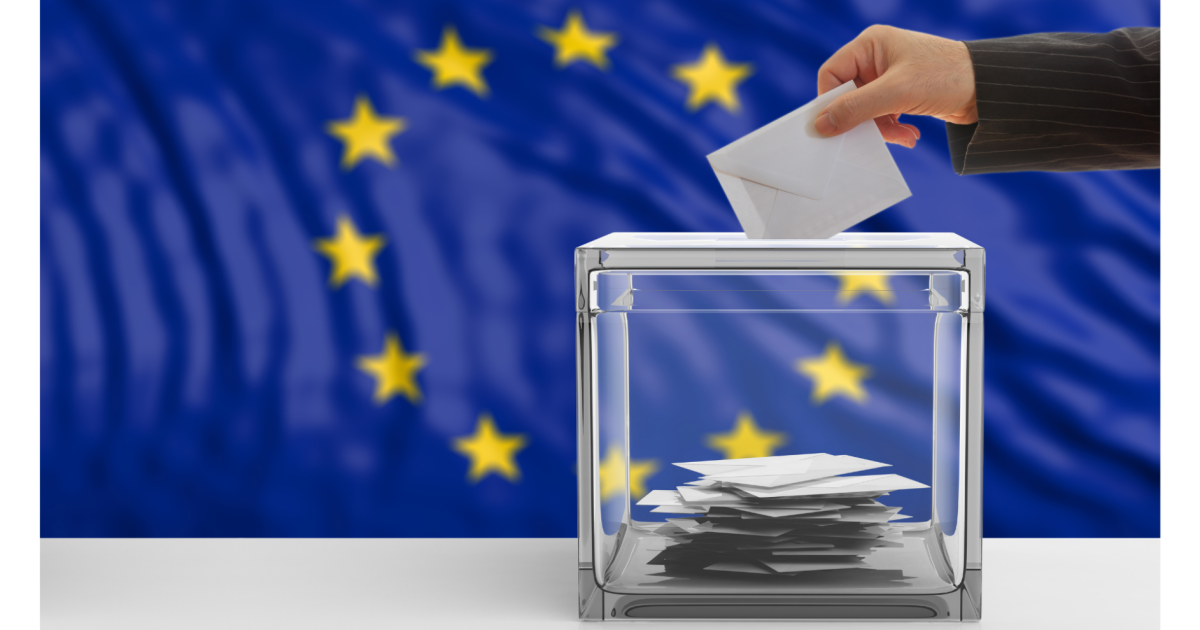
- Select a language for the TTS:
- UK English Female
- UK English Male
- US English Female
- US English Male
- Australian Female
- Australian Male
- Language selected: (auto detect) - EN
Play all audios:
The victory of the “no” vote in the French referendum of May 29, 2005 on the “European Constitution” was a key political milestone in the country, which this article seeks to put into
perspective based on three complementary statements: – The consequences that could and should have been drawn from the French ‘no’ vote do not reflect a “denial of democracy”: this recurring
criticism stems, on the contrary, from a denial of political reality (&-1); – European integration became much more “French” between 2005 and 2025, even if it cannot be completely
equated with a “bigger France” (§-2); – The popular rejection of the “European Constitution” expressed a rejection that was not aimed solely at “Europe” and that could only be mitigated if
its national roots were addressed (§-3). 1. THE RESPONSE TO THE “NO” VOTE: “DENIAL OF DEMOCRACY” OR DENIAL OF REALITY? 1.1. THE ENTRY INTO FORCE OF A VERY DIFFERENT “AMENDED TREATY”, BOTH IN
FORM AND SUBSTANCE – The “Constitution” was a text of approximately 450 articles, clearly presenting all the Community treaties already in force and the changes that its drafters wished to
make to them; the Treaty of Lisbon comprises seven articles; – The Constitution was 450 pages long in the Official Journal of the European Union, while the Treaty of Lisbon is only 230 pages
long (see Table 1); – The referendum of 29 May 2005 was in no way “repealing”; it could not remove provisions already in force, but simply oppose the inclusion of new provisions in the
European Treaties; – The drafting of the Treaty of Lisbon gave rise to several substantial changes to the text of the “European Constitution”, of a “sovereignist” nature or with a social and
environmental dimension (see Annex 1). – A large number of other provisions included unchanged in the Treaty of Lisbon did not appear to have raised any particular opposition during the
2005 referendum campaign, including dozens of articles granting more legislative and supervisory powers to the European Parliament. 1.2. THE REJECTION OF THE RATIFICATION OF A NEW TREATY: A
DOUBLE DENIAL OF PARLIAMENTARY AND EUROPEAN DEMOCRACY – The idea that referendum democracy should take precedence over representative democracy is widely rejected in a Union where most
national political life is based on sophisticated parliamentary systems, and where some countries have even banned the use of referendums (Germany, Belgium, Cyprus and the Czech Republic); –
The “European Constitution” provided for an overhaul of the EU’s “co-ownership rules”, which were applicable to all Member States and could only be amended—except if there had been a
majority willingness to abandon such an overhaul; – The EU heads of state and government were even less able to transform the French and Dutch “no” votes of May 2005 into outright rejection
of a new treaty, given that two other referendums had resulted in a “yes” vote in Spain and Luxembourg, and that eight other EU Member States had already ratified the Constitutional Treaty
by parliamentary vote in May 2005, with eight others deciding to do so after that date—meaning that in January 2007, there were 18 “yes” votes and only two “no” votes (see Table 2); – The
“no” votes in 2005 could not be considered definitive: the rejection of the “European Constitutional Treaty” was not intended to prevent the adoption of any new Community treaty _ad vitam
aeternam_… 1.3 THE MYTHOLOGISED VICTORY OF THE ‘NO’ VOTE: AN AGGREGATION OF OPPOSITES, LARGELY FOCUSED ON NATIONAL ISSUES – It was not only the need to consider the balance of power at
European level that made it very difficult to fully satisfy voters who voted ‘no’ in 2005, but also the fact that the victory of the “no” vote was based on an aggregation of opposites (from
the radical left to the extreme right); – Analysis of the motivations of those who voted “no” (see Table 3) indicates that their vote was based more on national issues than on European
issues, as shown by the main opinion polls conducted immediately after the vote: among those who voted “yes”, 81% said they had made their choice on the basis of European issues, compared
with only 15% on the basis of national issues; among those who voted “no”, only 42% said they had made their choice on the basis of European issues, compared with 52% on the basis of
national issues; – The promoters of the ‘no’ vote are all the more united in their denunciation of a supposed “denial of democracy” because it was only by joining forces that they were able
to achieve a political victory, which is slipping away from them most of the time; – It is therefore hardly surprising that the victory of the “no” vote has since been celebrated as ‘the
mother of all victories’, but also that the consequences of this victory are perceived as an even more bitter defeat, with little consideration for its diffuse but real impact on the content
of European policies (see Part 2), if not French policies 2. A MORE FRENCH EUROPE, BUT NOT A “BIGGER FRANCE” The political choices made under the Sarkozy, Hollande and Macron presidencies,
as well as the ones made at European level, were such as to satisfy—at least partially—the French people, particularly those who voted “no”. Indeed, European integration became more ‘French’
between 2005 and 2025—even if it cannot, by definition, be a “France in bigger”. 2.1 ‘TWENTY YEARS ON’: A MORE ‘FRENCH’ EUROPE… – The ‘Services Directive’ (known as the “Bolkestein
Directive”) has been significantly revised and a “European Labour Authority” has been created to support Member States on issues relating to cross-border labour mobility, including rules on
the free movement and posting of workers; – The governance of the Economic and Monetary Union (EMU) has moved much closer to traditional French positions (see Table 4) and, even though the
management of the “eurozone crisis” undoubtedly contributed to the deterioration of the EU’s image in France at the time, a large majority of French people do not want to abandon the euro; –
The prospect of Turkey’s accession has receded significantly since 2005; however, the EU has expanded to include three new countries since 2005, it has decided to open accession
negotiations with Albania and North Macedonia, as the war in Ukraine has revived the question of the EU’s enlargement, towards which French public opinion remains sceptical; – _Last but not
least_, over the past 10 years, the EU has undergone significant transformations, often in line with France’s priorities on European sovereignty, in response to the shocks faced by
Europeans: the migration crisis, the health crisis, the energy crisis and the return of war to the European continent. 2.2 THE EU IS NOT JUST A “BIGGER FRANCE”: THE LIMITS OF EUROPEAN
PARTNERS’ ALIGNMENT WITH FRENCH POSITIONS – While there is now a European consensus on how to address economic and security vulnerabilities, a consensus that strongly echoes “French ideas”,
not all EU member states view the agenda of “European sovereignty” and “strategic autonomy” in the same way: this reality can be illustrated by several examples, the most striking of which
is currently the draft EU-Mercosur agreement; – In terms of defence, Russia’s invasion of Ukraine has led to a new awareness within the EU of the need to rearm Europe, as has the
unprecedented breakdown of trust in the Western camp caused by Donald Trump. This dual movement strongly echoes traditional French thinking; however, it will be difficult to bring about a
genuine “Europe of defence” and to advance the “Europe of armaments” if France advocates a “European preference” in arms procurement while remaining ambiguous about what this means
precisely: do “made in France” weapons correspond to this definition of “European preference” or are they, on the contrary, opposed to it? – While France is naturally justified in wanting to
promote the nuclear industry for its own benefit, since energy mixes are defined by EU Member States, its European crusade on this issue raises many reservations in Europe, given that its
neighbours’ energy mixes tend to give priority to renewable energies – and that France is the only country among the 27 that has not achieved the jointly agreed targets in this area; – _Last
but not least_, our country does not seem to have made much progress in terms of the culture of negotiated compromise that characterizes most other EU Member States and institutions, and
whose absence explains much of the unease generated by the response to the “no” vote in 2005; still marked by a binary system maintained by the rules and customs of the Fifth Republic, this
culture of compromise is struggling to take hold at the national level, even in a context where it is impossible to find a majority of ideas in Parliament, and even more so at the European
level; – All of this gives rise to a dual political and civic requirement: to educate people at European level about the project of “European sovereignty” in order to convince them that it
is not a question of promoting purely French interests; but also to explain to the French people that this project will not lead to the dissolution of French national independence. This is a
_sine qua non_ condition for facilitating greater alignment between French and European positions, but also for promoting a more lucid understanding of European realities among the French
people 20 years after the “no” vote. 3. THE “FRANCE OF NO”, NOT ONLY TO EUROPE: THE EMERGENCE OF NEW STRUCTURAL POLITICAL DIVISIONS The referendum of May 29, 2005 marked a turning point in
French political life, as it brought together voters from various segments of the electorate, both politically and socially, in the “No” camp. It revealed a plurality of motivations, some of
which were genuinely European, and highlighted a dual representation of European integration in French society. This dual interpretation highlights the fact that the “no” vote was not
merely a sanction against the executive, with a purely national dimension, or a simple vote against Europe, but that it manifested a profound transformation in the French people’s
relationship with Europe, foreshadowing the structural divisions that would emerge in the following years. 3.1. THE EMERGENCE OF A NEW DIVIDE BETWEEN UNIVERSALISM AND ANTI-UNIVERSALISM – The
main legacy of the 2005 referendum lies in the emergence of a structural divide that goes beyond the traditional opposition between supporters and opponents of European integration: this
divide pits “universalists”, who espouse humanist and progressive values, against “anti-universalists”, who defend identity, borders and national sovereignty; – This divide became apparent
in the late 1990s, profoundly reshaping the French political landscape, particularly in political proposals on Europe, immigration and globalisation: European integration thus became a
pivotal issue around which new fault lines emerged; – This divide does not replace the left-right divide, but only partially overlaps it and makes it more complex, making it difficult for
parties to formulate coherent positions; – The 2005 vote spectacularly revealed this dual structure of the French political landscape. Previous electoral sociology studies had already
highlighted this tension: part of the left, which was pro-Europe, rejected its liberal terms; part of the right, which was pro-European in principle, feared the effects of migration and the
EU impact on national identity. 3.2. THE LEGACY OF MAY 29, 2005: TWO IRRECONCILABLE DIMENSIONS OF FRENCH POLITICS? – In 2017, Emmanuel Macron attempted to reconcile the two dimensions of the
French political debate by proposing a political synthesis centred on “universalism”: by bringing together progressives from the left and right, his project aimed to overcome traditional
divisions by constructing an opposition between “universalists” and “nationalists”; – This attempt at realignment has been partially unsuccessful, as demonstrated by the Yellow Vests crisis
and as highlighted by Cevipof data, which reveal the persistence of duality in opinions on Europe (see Graphs 4 to 6): the French express both social concerns (decline in social protection,
unemployment) and identity concerns (immigration, cultural loss) about European integration; – Factor analysis of the data highlights two axes: the first, which cuts across the data,
distinguishes individuals according to their level of general fear of Europe; the second, more traditional, contrasts the left and right according to the nature of their fears. The first
continuum does not strictly follow the left-right divide, while the second reflects the traditional opposition; – This dual structure largely explains the difficulties encountered in
building stable political coalitions and the strategies adopted by political groups to deal with these tensions. 3.3. THE OTHER LEGACY OF 29 MAY 2005: STRONG SOCIAL POLARISATION AND A DEEP
DEMOCRATIC DIVIDE – Analysis of opinions expressed in 2018 regarding Europe shows that the social dimension of fears is strongly linked to a series of social and political factors; it
clearly illustrates a strong polarisation on these dimensions, which was strongly revealed in the Yellow Vests crisis; support for the Yellow Vests, on the other hand, is less correlated
with the dimension of identity fears, suggesting that this movement was more rooted in social concerns; – This divide reveals a fundamental split between a France in difficulty and a France
that is not experiencing as many difficulties; it also reflects the inability of traditional forms of political representation to channel this anger. Since 2005, elections have confirmed the
persistence of this two-dimensional structure, consolidating the tripartite division of the political space; – The 2005 referendum also crystallised a lasting mistrust vis-a-vis
institutions, becoming a symbol of the rift between leaders and citizens: to overcome this divide, it is necessary to pursue ambitious social policies, reform French democracy and rebuild a
collective narrative on Europe; – The construction of Europe must also continue to be reoriented through renewed compromises, accompanied by educational efforts on the real causes of the
2005 “no” vote and its long-term consequences.







